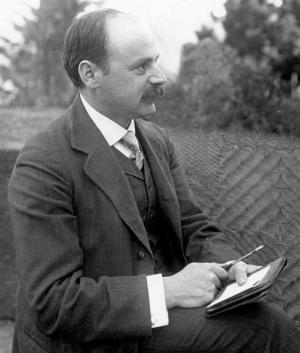Year born: 1873
Research Areas: Relativity, Black Holes, Quantum Theory, Stars, Comets
"Mathematics, physics, chemistry, astronomy, march in one front."
Source: Eddington A. S. Karl Schwarzschild, Monthly Notices of the Royal Astronomical Society 77 (1917), 314-319.

Early Life
Karl Schwarzschild was born in Frankfurt, Germany. His father was a successful businessman and his family enjoyed arts and music. Karl became interested in stargazing and saved his pocket money to build a small telescope. His father encouraged his interest in maths and astronomy. Karl was the first member of his family to become a scientist. He learned a lot of advanced maths from his friend, Paul Epstein who went on to become a mathematician. Karl studied at the University of Strasbourg and got his PhD from the University of Munich in 1896. After university, Karl worked as an assistant at Von Kuffner Observatory in Vienna.
Career Highlights
Karl researched lots of areas of science but is best known for finding the first exact answer to Albert Einstein’s equations of general relativity. He did this in 1915 while calculating missile trajectories as a soldier in the First World War. During that time, Karl developed a rare autoimmune skin disease. Despite suffering from pain, Karl published two outstanding papers on general relativity and one on quantum theory.
Karl’s research included the maths of black holes. A black hole is an object where the gravity is so powerful that nothing can escape. Not even light. That is why we cannot see them. Karl calculated the radius of the event horizon of a black hole – now known as the Schwarzschild radius. Any object which becomes small enough to fit within its own Schwarzschild radius becomes a black hole. The Earth’s Schwarzschild radius is about 1 cm. If we squashed the Earth down to the size of a marble, it would become a black hole. Karl thought that this solution was only useful in theory. He did not believe black holes existed.
Karl sent his work to Einstein who replied:
“I had not expected that one could formulate the exact solution of the problem in such a simple way.”
Legacy
Karl died in 1916 age 42 at the height of his achievements. He did not receive many awards when he was alive. An asteroid and crater on the Moon are named in his honour.
Other Interests
Karl enjoyed being outdoors. Especially skiing and mountaineering.
